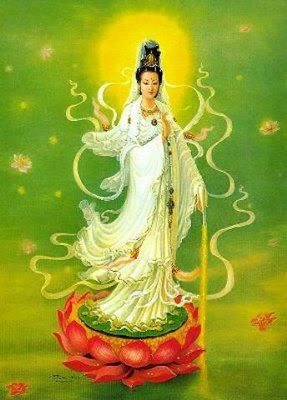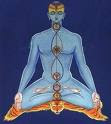
The irony is that anything that is not within the prescribed form of a vedic veena (according to the authentic material gathered by me in my postings,"Veena/Gayathri -Mantra/Upanishads" , "Veena Rahasya" and "Deiva Veena-Maanushi Veena"), is NOT a Veena!A Veena is a Veena only as a whole,from the head (kudam)to the lion-face(simha-mukha),and seizes to be a Veena when the head and lion-face are severed from the trunk (dandi).Such veenas are being manufactured for travel comfort, to be carried as cabin baggage,so that the whole veena need not be checked in the aircraft due to its size and weight.In other words the Veena is being severed to make it travel friendly!
Even to claim otherwise (after dismembering the veena,claiming that the Veena is still original and the same as before) implies gross disregard and abuse of the instrument.Whatever maybe the reason for the blasphemous act of dismantling the Veena, the entire excercise of playing on a dismembered veena (that the Veena is held in place with the help of screws does not rectify its state of abuse) is not only sinful but also wasted ,because the prescribed practice of pranayama while playing the veena becomes futile due to the broken joints of the veena.Coordination of life-force energy and veena nada cannot result with one body-"Maanushi Veena"(veena) cruelly dismembered and with the other body-"Deiva Veena" (player's) being healthy.There is no nada in a dismembered veena-even if the latest digital mixer amplifiers and sound systems are there to make just about anything sound exotic.At this juncture,it has to be emphasised ,that the true nada of a Veena can be determined only WITHOUT a mike system.Only the naked tone of the veena (minus any technical gadget attached to it) can reveal the life (nada) contained within.Sound systems can change/enhance the tone of the instrument,and with the advanced technology that we have today,a veena could also be made to sound like a sitar or a gottuvadyam or a mandolin.
True tone of a veena emerges with the combined resonance of the player's prana and the veena's tone,which is simply not possible on a dismembered Veena.
Yes,it is difficult to handle a Veena,not only playing on it,but travelling with the instrument can also be extremely arduous.But it has to be done with love and devotion for the divinity.Adapting anti vedic methods of dismantling the Veena reeks of sacrilege !Nothing is as important or mandatory as preserving the body of the divine instrument,Veena.
I remember the phone call I had received from late Sri K.V.Narayanaswami many years ago. Sri K.V.N told me that a veena technician had left a dismantled Veena in his house.He said he had no use for it and asked me to take the veena away.Normally I would have flatly refused to even look at such a 'veena',since the call was from the Sri K.V.N , I promptly went to his house .I told him I would request some other veena technician to fetch the instrument,as I would never recommend anybody to play on a dismembered veena.Sri K.V.N. agreed to that and sadly I could not find any technician who was willing to take the veena.After a long search,I got back to Sri K.V.N when he informed me that he himself had found somebody who was willing to take the veena!
I also remember,this particular aged Ghanapati .(whom I had met at a "yaagam" , where I happened to perform )He came up to me and told me:"It is believed that in the process of reading Mahabharatham, people undergo untold difficulties, trials and tribulations. Many people even hesitate to read this particular epic fearing unforeseen changes and upheavals.Same is the case with veena playing.Play the true veena (veena in the prescribed,vedic form) and in the process you could encounter many cyclones and storms in life, but never lose heart,NEVER give up Veena!That will uplift you spiritually!"
Veena is an embodiment of the Goddess Herself!The nada that emanates from the Veena is the sweet speech of the Goddess.This is a divine instrument meant for pooja, not amputation!
 Legend says Quan Yin,originally a princess, having forsaken marriage,lived her life in a conventmuch to her father's anger and distrust.She was a Buddhist Bodhisattwa ( a mortal who has achieved enlightenment and earned the right to enter Heaven or Nirvana), and when at the gates of Heaven,She heard someone on Earth cry, and so turned back,vowing that she would stay on Earth to do all she could to ease our suffering.She would not enter heaven until everyone could go there with Her.She was known as the goddess of Compassion and Mercy.
Legend says Quan Yin,originally a princess, having forsaken marriage,lived her life in a conventmuch to her father's anger and distrust.She was a Buddhist Bodhisattwa ( a mortal who has achieved enlightenment and earned the right to enter Heaven or Nirvana), and when at the gates of Heaven,She heard someone on Earth cry, and so turned back,vowing that she would stay on Earth to do all she could to ease our suffering.She would not enter heaven until everyone could go there with Her.She was known as the goddess of Compassion and Mercy. Arunachala Bhakta Bhagavat from "UNFORGETTABL-E DATES,"RAMANA MAHARISHI'S MIRACLES"(Mr.Bhaga-vat,New York)
Arunachala Bhakta Bhagavat from "UNFORGETTABL-E DATES,"RAMANA MAHARISHI'S MIRACLES"(Mr.Bhaga-vat,New York)








